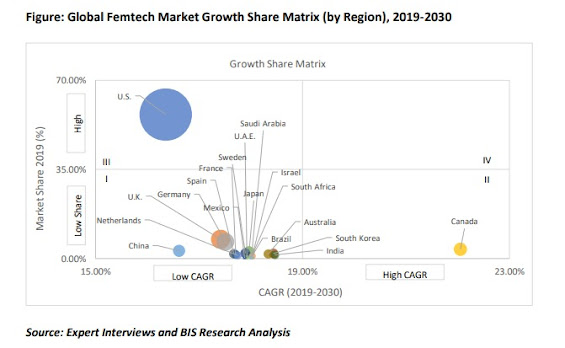The healthcare industry as a whole is undergoing significant transformations in order to improve
or maintain high-quality care while reducing costs. Factors like the ageing population and
disparities in care standards between developed and developing economies make resolving
these issues difficult. As it is the most effective treatment option, minimally invasive surgery has
a lot of potential in the healthcare industry. Robotics has gained a lot of traction in the healthcare
industry over the last few years.
The market for robotic-assisted imaging technologies is expected to expand rapidly over the
forecast period, owing to rising chronic disease incidence, an ageing global population, improved
reimbursement policies, and government initiatives and funding to develop technologically
advanced products. The market’s growth slowed slightly in 2020 due to the COVID-19 pandemic;
however, the market began to recover in 2021 and is expected to rise steadily through the end of
2030.
The global robotic-assisted imaging technologies market is influenced by a number of factors.
The rise in minimally invasive surgical procedures around the world, evolution in image
modalities and features, and increased use of robotics in the medical field are all factors that are
positively impacting the market’s growth. Some factors, on the other hand, will have a
growth-limiting effect on the market. The major barriers to market growth are robotic failures
leading to a low rate of adoption, lack of acceptance of robotic procedures, and an increase in
the use of robotics in the medical field.
According to BIS Research, Global Robotic-Assisted Imaging Technologies Market was valued at $617.7 million in 2020
and is projected to reach $2,207.8 million by the end of 2030, growing at a CAGR of 13.74% during
the forecast period 2021-2030.
The healthcare industry is evolving, with a focus on more informative advanced tools rather than
traditional approaches. Robotic-assisted imaging technologies, for example, have been created
to provide more precise and optimal diagnostic results. Despite the availability of a variety of
strategies, the market’s hold on technology is fragmented and incomplete.
By introducing technologically advanced products, robotic-assisted imaging technologies have
revolutionised diagnostics practices. Robotic-assisted imaging systems are quickly becoming
the most lucrative opportunities for major corporations, with many companies focusing solely on
developing multiple diagnostic and treatment-focused products. The prominent players in this
market are Becton, Dickinson and Company, Boston Scientific Corporation, Terumo Corporation,
Varian Medical Systems, Inc., Eckert & Ziegler BEBIG AG, HealthTronics, Inc., Teleflex
Incorporated, and Johnson & Johnson among others.
BIS RESEARCH’S TAKE ON THE
INDUSTRY
What is the addressable market size and forecast based on region?
North America dominates the global robotic-assisted imaging technologies market. The highest market share of the North America robotic-assisted
imaging technologies market can be attributed to the high prevalence of chronic diseases such
as cardiovascular diseases and cancer, among others, the growing geriatric population, and the
high reimbursement rates. The North America medical device market is the early adopter of the
latest technologies and has now turned into a technological hub for companies offering advanced
solutions to the healthcare market.
The Europe robotic-assisted imaging technologies market is one of the markets with high
growth potential. The major driving factors for cancer in Europe include
the availability of good medical facilities, preference of interventional procedures by European
people, high consumption of alcohol, and high preference and incidence of cancer.
The Asia-Pacific robotic-assisted imaging technologies market is one of the lucrative markets
with immense potential for expansion by key players of the global robotic-assisted imaging
technologies market.
The Asia-Pacific robotic-assisted imaging technologies market is expected to grow at the fastest
rate during the forecast period. This can be attributed to the massive geriatric population base,
demand for minimally invasive and non-invasive surgical procedures, and high prevalence rates
of cancer.
What are the key trends of the global robotic-assisted imaging modalities market?
Robotic-assisted imaging technologies are one of the disruptive classes of medical devices and are
influenced by various technological trends.
- Shift Toward Minimally Invasive Procedures
- The shift to minimally invasive procedures is one of the breakthroughs in healthcare.
What are the market shares of key competitors in the global robotic-assisted imaging
modalities market?
The significant potential of robotic-assisted imaging technologies in addressing several types
of cancers that are outcomes of sedentary lifestyles as well as geriatric diseases have made
the global robotic-assisted imaging technologies market one of the most lucrative industries for
players in the global healthcare scenario.
Becton, Dickinson and Company, Boston Scientific Corporation, and Terumo Corporation are
the major contributors to the global robotic-assisted imaging technologies market. Extensive
13
product portfolio comprising supporting devices and treatment devices are the key factors for
the dominance of these companies in the global market.
RELATED MARKET REPORTS
ABOUT BIS HEALTHCARE
BIS healthcare vertical offers intelligence in the healthcare technology market for precision medicine, robotics and imaging, life sciences and biopharma, medical devices, digital health, and other emerging healthcare technologies, covering the entire industry spectrum. In the past eight years, BIS Healthcare has published more than 50 reports under the precision medicine banner. Additionally, BIS Research has been nominating ‘Top 25 Voices’ in precision medicine on its InsightMonk platform for the past two years successfully.








No comments:
Post a Comment